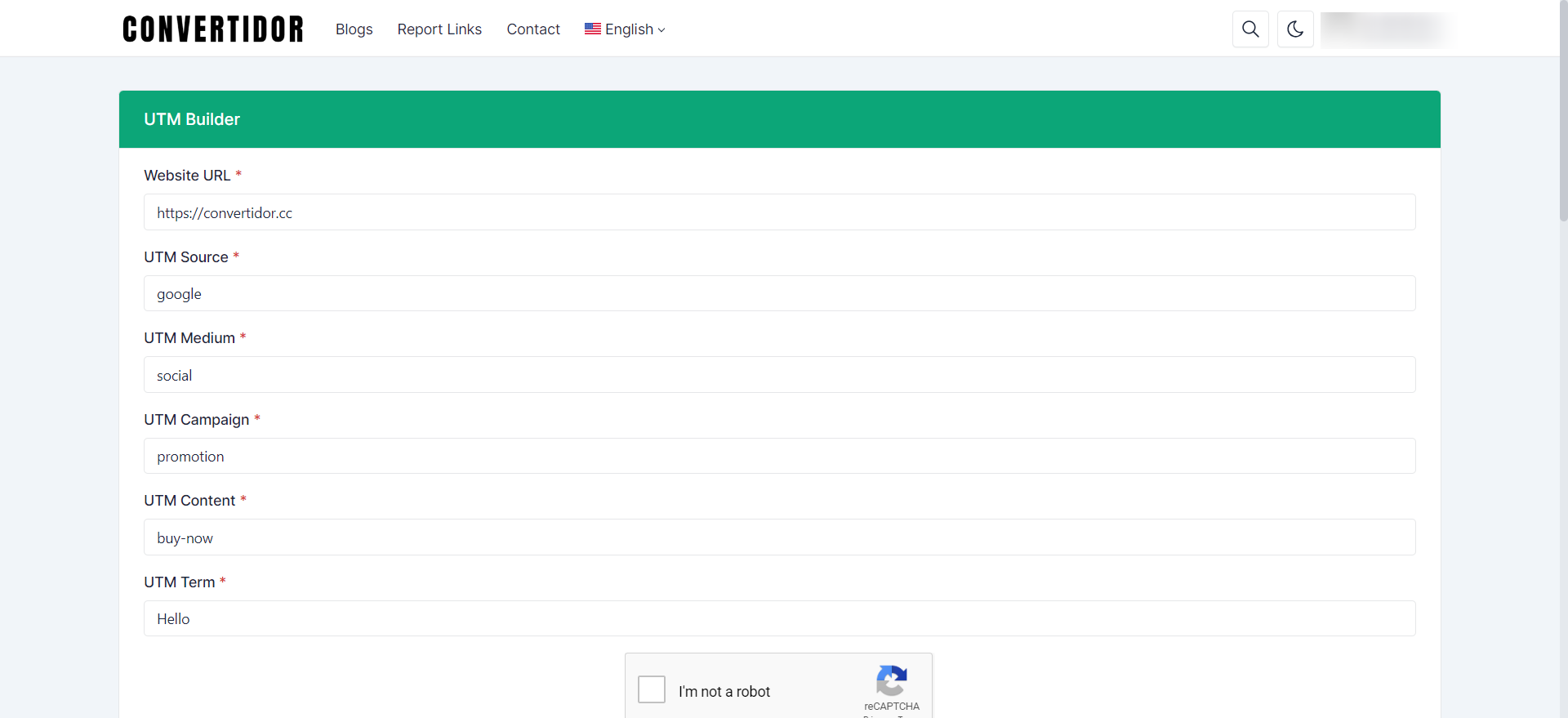UTM Builder
Convertidor.cc UTM Builder
What is the UTM Builder Tool?
The UTM Builder tool on convertidor.cc allows you to easily create UTM (Urchin Tracking Module) parameters for your URLs. These parameters help you track the performance of your marketing campaigns by providing detailed data in your analytics platforms, such as Google Analytics. With UTM parameters, you can see exactly where your website traffic is coming from, which campaigns are most effective, and how users interact with your content.
How to Use the UTM Builder Tool

- Enter the URL: Input the URL you needed to track.
- Fill in UTM Parameters:
- Campaign Source: Identify the source of your traffic (e.g., Google, Facebook).
- Campaign Medium: Specify the medium (e.g., email, CPC).
- Campaign Name: Name the campaign (e.g., summer_sale).
- Campaign Term (Optional): Include keywords if you're tracking paid search campaigns.
- Campaign Content (Optional): Differentiate ads or links within the same campaign.
- Generate UTM URL: Click the "Generate UTM URL" button.
- Copy and Use: Copy the generated UTM URL and use it in your marketing campaigns.
Why Use the UTM Builder Tool?
- Accurate Tracking: Gain precise insights into where your traffic is coming from and how your campaigns are performing.
- Customizable: Tailor UTM parameters to match your specific campaign needs.
- Simple to Use: Generate UTM URLs quickly without needing to manually add parameters.
- Free: No cost to use the tool, allowing unlimited UTM creation.
Common Uses for the UTM Builder Tool
The UTM Builder tool is commonly used for:
- Email Marketing: Track the effectiveness of different email campaigns.
- Social Media: Monitor traffic from social media platforms like Facebook, Twitter, and LinkedIn.
- Paid Advertising: Analyze the performance of paid search campaigns and banner ads.
- Content Marketing: Understand how different pieces of content drive traffic to your site.
Benefits of Using the UTM Builder Tool
- Enhanced Analytics: Improves the quality of your analytics data, making it easier to measure ROI and campaign success.
- Time-Saving: Quickly create UTM URLs without manually typing each parameter.
- Improved Campaign Management: Keep your marketing efforts organized by using standardized UTM parameters.
- Increased Conversions: By understanding which campaigns work best, you can optimize for better conversion rates.
How the UTM Builder Tool Solves Problems
The UTM Builder tool solves the problem of vague and incomplete tracking in marketing campaigns. Without UTM parameters, it can be challenging to attribute traffic accurately and understand the effectiveness of different marketing channels. By using the UTM Builder, you can easily track and analyze the performance of your campaigns, leading to more informed decisions and improved marketing strategies.
FAQs for Convertidor.cc UTM Builder
















